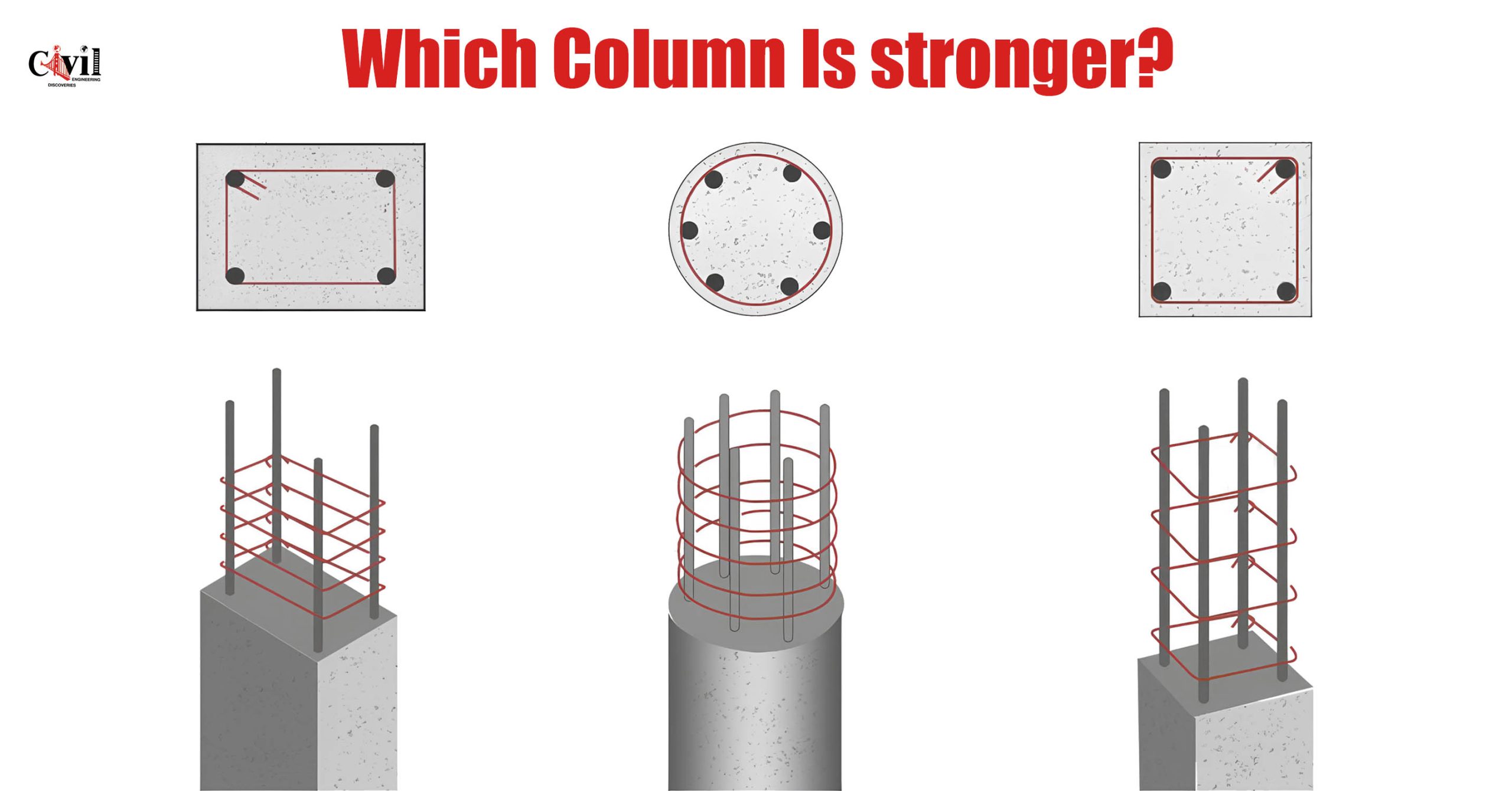All three geometric shape columns, such as rectangular, square, and circular, have no difference in structural capacity. They are designed in such a way that they can carry the loads perfectly. However, there are some differences:
- Symmetry: The circular or cylindrical shape is symmetry, whereas a square has 4 axes of symmetry, and a rectangle has 2 axes of symmetry. So circular columns will have the same moment of inertia at all axes to avoid buckling failure.
- Area: A circular column occupies a smaller area. If you construct a circular. column having the same diameter as a square column’s side length, the circular column holds only 0.785 times of the square column area.
- Reinforcement: A circular column requires a minimum of six numbers of reinforcement whereas a square or rectangular columns only need four numbers of reinforcement.
- Formwork: Formwork is easy for a rectangular column due to its straight sides. Circular column shuttering is a little bit difficult.
- Aesthetics: Circular Columns are aesthetically pleasing compared with other geometrical types of columns.
- Load Handling: The load requirement to buckle the circular column is equal to the perimeter of the column, but the rectangular column may deflect through both axes. The rectangular or square column has four weak points (corner edge), but the circular is in the shape of a cylinder, so there are no weak points. The circular column is strong in compression compared to the square column in the same cross-sectional area.
- Square Column: A square column distributes loads uniformly across its cross-section. It offers good resistance to bending and torsional forces due to its symmetrical shape. However, in terms of stability against buckling, it may not perform as well as other shapes.
- Rectangular Column: Similar to square columns, rectangular columns distribute loads evenly across their cross-sections. The strength of a rectangular column depends on the ratio of its width to depth (aspect ratio). Columns with lower aspect ratios (closer to square) tend to be more efficient in resisting buckling.
- Circular Column: Circular columns distribute loads uniformly around their circumference, providing excellent resistance to bending and buckling. They are often considered the most efficient shape for resisting axial loads and are commonly used in structural engineering.

